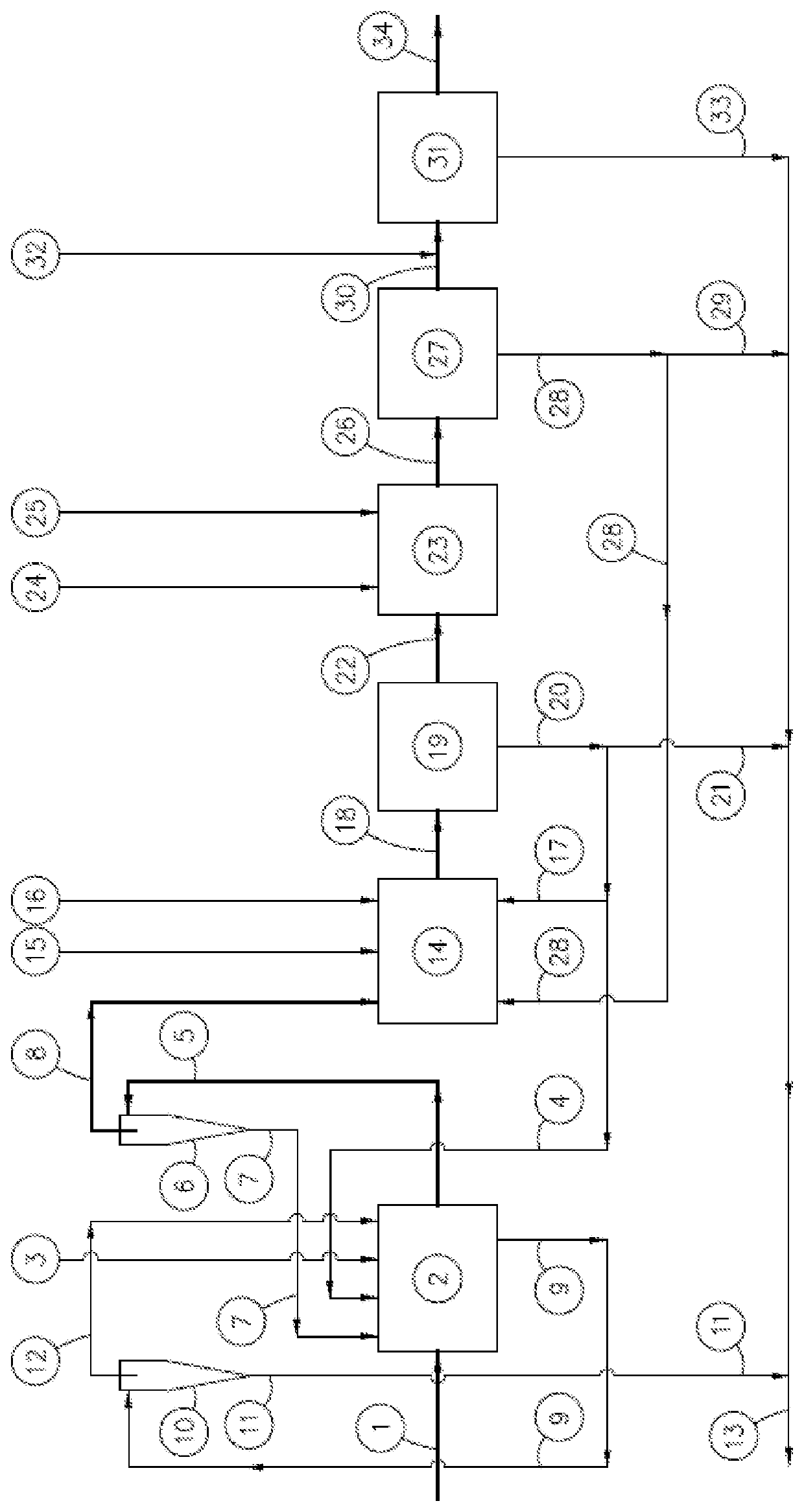New process for the treatment of high sulphate waters
- Summary
- Abstract
- Description
- Claims
- Application Information
AI Technical Summary
Benefits of technology
Problems solved by technology
Method used
Image
Examples
example 1
New Process for Treatment of Sulphate-Rich Waters
[0090]With reference to FIG. 1, high sulphate water enters as stream 1 into the initial reaction stage 2. Also entering the initial reaction stage is the input of lime or a suitable hydroxide containing material 3 and a recycle stream 4 of ettringite and other calcium alumino-sulphate hydrate compounds from a first clarification stage 19 that follows the further reaction stage 14. Stream 5 delivers reaction mixture from the initial reaction stage 2 and / or from the output stream 12 from the second particle segregation device 10 into the first particle segregation device 6.
[0091]Both of the particle segregation devices 6 and 10 are shown as utilising hydrocyclone technology. Typically, depending upon the volumetric flow rate within stream 1, an assembly of hydrocyclones arranged in parallel would be used for each of these particle segregation duties; although for simplicity only one is shown for each duty.
[0092]Alternative particle segr...
PUM
 Login to View More
Login to View More Abstract
Description
Claims
Application Information
 Login to View More
Login to View More - R&D
- Intellectual Property
- Life Sciences
- Materials
- Tech Scout
- Unparalleled Data Quality
- Higher Quality Content
- 60% Fewer Hallucinations
Browse by: Latest US Patents, China's latest patents, Technical Efficacy Thesaurus, Application Domain, Technology Topic, Popular Technical Reports.
© 2025 PatSnap. All rights reserved.Legal|Privacy policy|Modern Slavery Act Transparency Statement|Sitemap|About US| Contact US: help@patsnap.com

